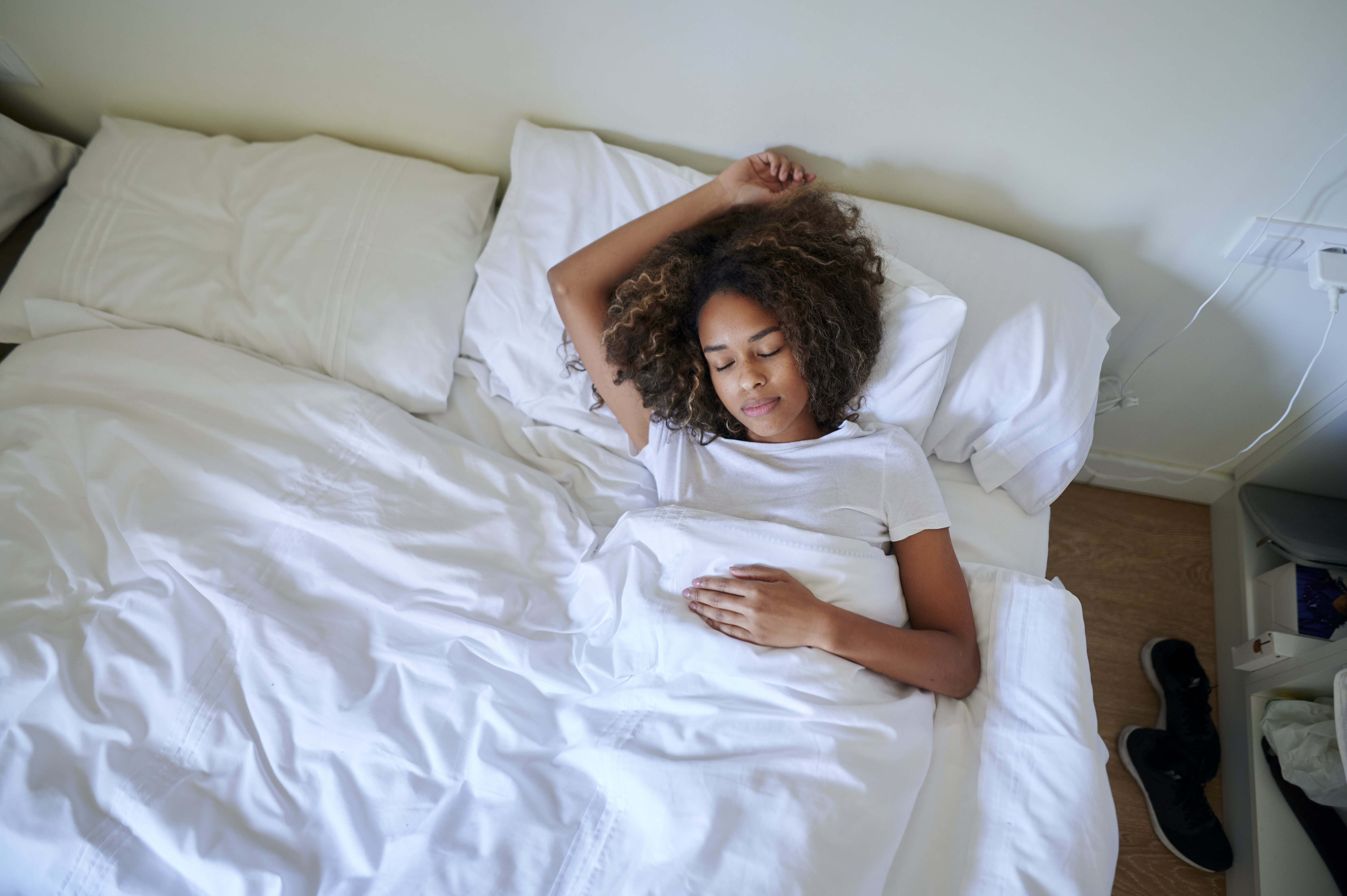They don’t call it “beauty sleep” for nothing. Getting a minimum of seven hours nightly is good for your health, which is above all else. But sleeping in the wrong position, or on the wrong type of pillowcase, can actually make you look more tired.
Luckily, there are also a few hacks to improve your chances of looking your best when you wake up. We talked to medical and beauty experts about the “three p’s” – position, pillowcases and purpose – which will help you get your zzz’s in the most wrinkle-preventing way possible.
Position matters. Try to sleep on your back
“Sleeping on your back is the best option when it comes to reducing wrinkles,” says dermatologist Michael Jacobs, medical technology director at Cortina and clinical associate professor of Dermatology at Weill Cornell Medical College. “When you sleep on your side, the skin folds and there is pressure on just one side of the face, which can allow wrinkles to form. Sleeping on your back can help combat those unwanted lines.”
Dermatologist Courtney Rubin, co-founder of Fig.1, agreed that back is best for wrinkle prevention. “Sleeping preferentially on one side of your face, or on your stomach, can lead to pressure and shear forces on the skin, along with creasing of the skin,” she says. “Spending many hours sleeping in a position where your skin is stretched and creased from your sleeping position can lead to wrinkle formation over time. If this applies to you, then finding a pillow that offloads pressure from your face – or changing positions to sleep on your back – can reduce the likelihood of these wrinkles.”
“Sleeping this way eliminates the possibility of your face being pressed into a surface all night,” says dermatologist Arash Akhavan. “It also eliminates any potential irritation from the surface you are sleeping on.”
If you’re wondering how you can change your natural sleeping position, there are ways. Here’s a full guide.
“Picture tossing a sheet down on your bed, crumpled in a pile,” says Joie Tavernise, medical esthetician and founder of JTAV Clinical Skincare. “The next day that sheet will be wrinkly, whereas if you stretch it out flat, it will remain wrinkle-free. Our skin acts the same way.” Her advice? “Just as you wear a hat and sunscreen during the day to protect from harmful UV rays and free radicals, at night there are tools and products to use to ensure that you aren’t doing damage during what is supposed to be a replenishing time.”
Pillowcases can be soothing for skin, especially if they’re silk
If you’ve been reading about the benefits of having the right type of pillowcase, there are some experts who see the logic behind the claims. “Silk pillowcases are better for your skin,” Jacobs says. “There’s less friction between your skin and the pillow, which reduces the negative effect that it can have on your skin.”
Don’t forget sleep masks, too, he says. “Using a silk sleeping eye mask can significantly reduce the formation of wrinkles by protecting the most delicate part of your skin around your eyes.”
So what’s so great about silk? “Because silk is softer than cotton, it won’t tug or pull at the skin as you move around during sleep,” Tavernise explains. “Silk also absorbs less moisture than cotton or microfibre, so it won’t suck the hydration or night products from your skin overnight.” She has another smart tip to keep your face its freshest: “Regardless of what type of pillowcase you use, you should be washing it regularly to prevent the spread of bacteria that can lead to acne.”
But sleep alone has a lot of benefits for your skin
It’s important to prioritise sleep as a time to undo some damage of the day that’s just passed.
“Most of the environmental damage that happens to skin is during the daytime hours, with exposure to pollution and oxidising agents, UV light and other factors, which all contribute, over time, to loss of collagen, fine lines, wrinkles and dark spots,” says Rubin. “I think of nighttime as a chance for skin recovery, by using topicals like retinol, which supports collagen production, and by getting sufficient rest to combat daily wear-and-tear.”
“When you’re sleeping, your skin is working to rejuvenate itself by increasing blood flow and rebuilding collagen,” Akhavan says. “With an insufficient amount of sleep, the body produces stress response hormones, which play a major role in skin inflammation, ageing and slower wound healing. Lack of sleep is one of the main contributors to ageing skin, and it also exacerbates inflammatory skin conditions such as eczema, psoriasis and dermatitis.”
So remember: Get a fresh, clean pillowcase (possibly silk), lie flat on your back and enjoy those sweet, skin-renewing dreams.
Source: Huff Post







